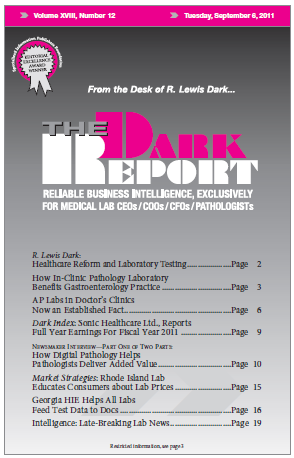CEO SUMMARY: It started about eight years ago and shows no signs of slowing down. Specialist physicians, particularly urologists and gastroenterologists, have learned about the benefits of operating their own in-clinic anatomic pathology laboratories. One-by-one, these specialty practices are investing in this ancillary service. As they do, local pathology groups lose access to these tissue …
AP Labs in Doc’s Clinics Now an Established Fact Read More »
To access this post, you must purchase The Dark Report.


